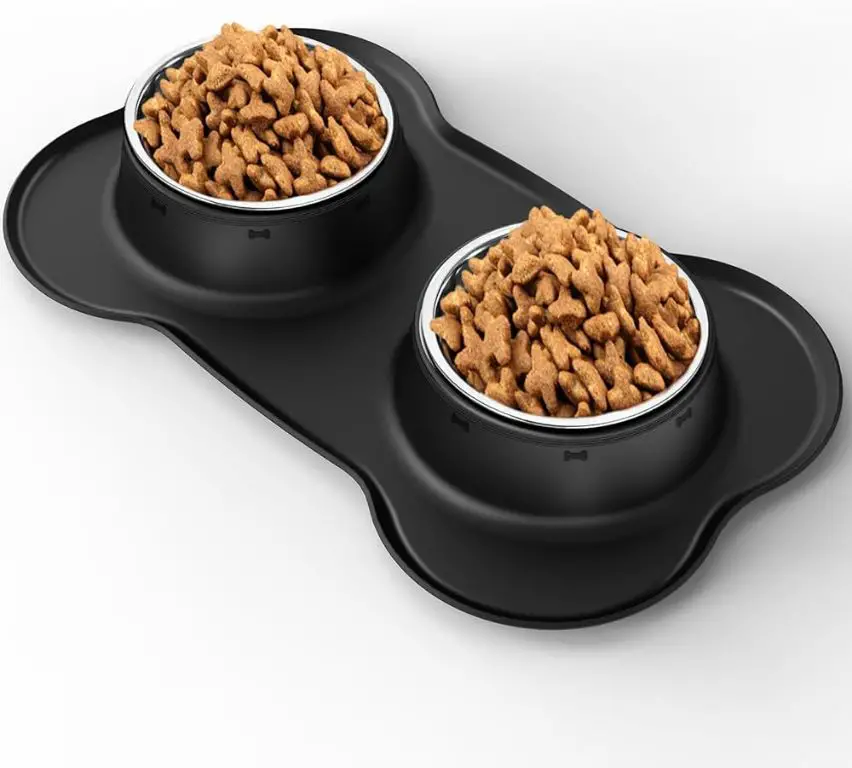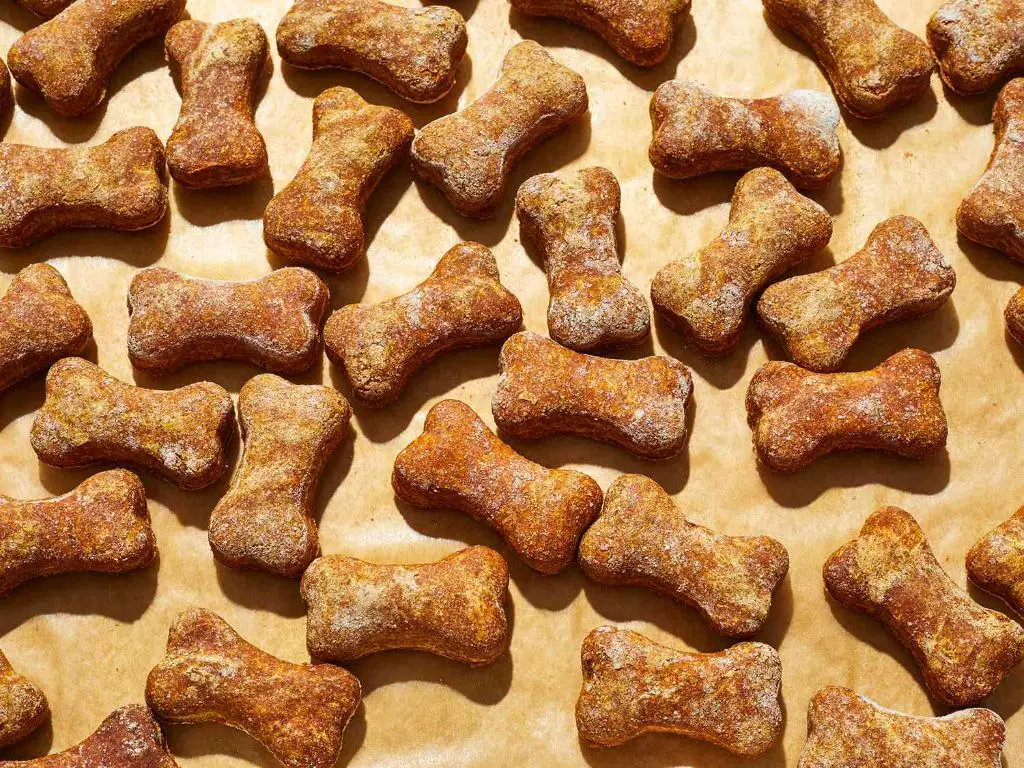Introduction
Owning a dog can be a rewarding but expensive commitment. From vet bills to grooming to toys and treats, pet parents have many expenses to consider when caring for their furry friends. One of the biggest costs associated with dog ownership is food. Feeding your dog a nutritious diet is essential for their health and wellbeing, but the price of high-quality dog food can really add up. Over the lifetime of your dog, you’ll likely spend thousands of dollars just to keep them fed. Understanding how much the average owner spends on dog food each month, and the factors that influence this cost, can help you plan and budget for this vital expense.
Average Cost of Dog Food
When it comes to dog food, there are two main types – dry kibble and wet canned food. On average, dry dog food costs between $15-30 for a 15-20 lb bag, which can last 1-2 months depending on your dog’s size. Wet canned food is more expensive per ounce, usually ranging from $1-3 per can. Since a medium sized dog eats around 1 can per day, this can add up to $30-90 per month just for wet food.

Taking into account both wet and dry food, most dog owners report spending an average of $20-60 on dog food per month. Small dogs that only eat 1/2 cup to 1 cup of kibble per day can cost as little as $15-25 per month. Medium dogs that eat 2-3 cups per day are more likely to be in the $30-50 per month range. Large breed dogs that can eat 4 cups or more per day tend to be on the higher end, with costs of $50-70+ per month.
So in summary, while costs vary based on your dog’s size, age, activity level and any specialty dietary needs, you can expect to spend $20-60 per month on average for a typical adult dog’s food budget.
Factors That Influence Cost
The amount you spend on dog food each month depends on several factors relating to your dog’s specific needs and characteristics:
Dog Size – Larger dogs eat more food, so buying for a Great Dane will cost more than for a Chihuahua. Giant breed dogs may cost over $100 per month just for food.
Age – Puppies and younger dogs need more protein and calories for growth and development. Senior dogs often need less calories but more joint support. Special puppy and senior dog formulas cost more.
Activity Level – Active dogs like athletes or working dogs require more protein and calories than couch potato pets. Food tailored for high activity comes at a premium.
Dietary Needs – Dogs with food allergies, sensitivities or health conditions like diabetes may require special hypoallergenic, veterinary or prescription formulas, which are more expensive.
Premium vs Budget Brands
There are significant differences between premium and budget dog food brands when it comes to ingredients and pricing. Premium brands use higher quality ingredients such as fresh meats, whole grains, fruits and vegetables. They avoid fillers like corn, wheat and soy. Premium foods also have more protein and natural sources of fat. This leads to better nutrition for dogs. However, premium dog foods come at a higher price point. Expect to pay $60-80 for a 30 lb bag. Budget brands use more plant protein, grains, and by-products to keep costs down. The ingredients are lower in nutritional value. Budget brands can cost half as much – $20-40 for a 30 lb bag. While premium brands are undoubtedly better for dogs, paying double the cost may not be realistic for all pet owners.

Wet vs Dry Food
When it comes to dog food, pet owners have to decide between wet food (canned) or dry food (kibble). Both have their advantages and disadvantages.
Wet dog food often has a high moisture content of around 75%, whereas dry food contains only 10% moisture. This high water content makes wet food more palatable and easier to digest for some dogs. Many dogs enjoy the taste and texture of canned food since it often contains real meat. The moisture also helps provide water to dogs with low thirst drives who may not drink enough.
However, wet food spoils quickly once opened and must be refrigerated. It’s also more expensive per ounce compared to dry kibble. The cans create more waste as well. On the other hand, dry dog food can be left in the bowl for the day since it contains preservatives. Kibble is very convenient, portable, and easy to store. It also helps scrape away tartar and keeps teeth clean. However, some dogs may find dry food less appealing.
In the end, it comes down to your dog’s preferences and needs. Mixing wet and dry or alternating between the two provides the benefits of both. Consult your vet for advice if your dog has any health issues that require a special diet.
Making Your Own Dog Food

Making your own dog food can be a great way to save money while providing high-quality meals for your dog. While premade dog food may seem like the easier solution, it’s actually not that difficult to prepare your own homemade dog food. The basic recipes are simple and require only a fraction of the cost compared to store-bought foods.
Typical homemade dog food recipes involve some combination of cooked meat, grains, and vegetables. Some popular recipes include:
- Beef and rice: Ground beef, white rice, carrots, peas
- Chicken and oats: Ground chicken, oats, sweet potatoes, spinach
- Turkey and barley: Ground turkey, barley, green beans, apples
When making your own dog food, it’s important to ensure the meals are nutritionally balanced. Consulting with your veterinarian is advised, especially for puppies or dogs with specific dietary needs. You can also find recipes formulated by veterinary nutritionists online or in books.
The cost savings of homemade dog food can be significant. On average, homemade meals cost about $1-$2 per pound compared to $3-$4 per pound for quality commercial dog foods. For a medium-sized dog eating 2 pounds per day, that could mean saving $100 or more per month.
While it does require more effort on your part, making your own dog food can be rewarding. You’ll have control over the ingredients, quality, and nutrition. Just be sure to consult experts and properly store and handle the food.
Getting the Best Deal
When it comes to saving money on dog food, buying in bulk, using coupons, joining loyalty programs, and opting for generic brands can go a long way. Here are some tips:
Buy in Bulk: Buying dog food in bulk from big box stores or online retailers can offer significant cost savings over buying smaller bags from the grocery store. Opt for large bags when possible, just be sure to store the food properly to maintain freshness.
Use Coupons: Sign up for an email newsletter from your preferred dog food brand to receive periodic coupons. You can also look out for coupons online and in newspaper inserts. Even $1-3 off can add up over time.
Join Loyalty Programs: If you have a pet specialty store near you, join their loyalty program to earn points and eventually discounts on dog food with each purchase. This can save 10% or more.
Buy Generic Brands: Opt for the generic or store-brand version of dog foods you typically buy to get the same nutrients and ingredients at a fraction of the cost. Just be sure to transition slowly to avoid upsetting your dog’s stomach.
Taking advantage of these savings opportunities allows you to get quality dog food while sticking to your budget. A little planning goes a long way.
Hidden Costs
When budgeting for dog food each month, it’s important to consider costs beyond just the kibble or cans of food. Many dog owners also regularly purchase treats, chews, supplements, and waste bags that can add a considerable amount to the monthly dog food budget.

Treats and chews are common additional purchases, used for training rewards and providing mental stimulation. While individually inexpensive, regularly purchasing treats can increase the monthly budget. It’s a good idea to factor in treats when determining your overall dog food costs.
Food waste is another hidden cost. Kibble left uneaten or spilled adds up over time. Using puzzles or slow feeder bowls can help reduce waste. But some waste is inevitable with most dogs. Budgeting a bit extra each month allows for this normal loss.
Additional items like waste bags for cleaning up after walks also contribute to monthly costs. While not directly food-related, these extras should be considered part of the overall dog care budget.
Being aware of these hidden costs helps create a realistic monthly budget that covers all a dog’s nutritional and care needs.
Monthly Budget Example
Here is a sample monthly budget for a 30 lb medium-sized dog eating primarily dry food:
Dry Kibble:
- 30 lb dog eats about 4 cups of kibble per day
- Bag of premium brand dry food costs $50 and contains 30 lbs
- 1 bag lasts about 1 month (30 days)
- Cost per month: $50
Canned Food:
- Feed one 3 oz can per day as a mixer
- Case of 24 cans costs $25
- 1 case lasts 24 days
- Need about 1 case per month
- Cost per month: $25
Treats:
- 1 bag of treats per month costs around $10
Total: Around $85 per month to feed a medium-sized dog a premium diet of dry kibble and canned food.
Conclusion
In conclusion, dog food costs can vary widely based on the type of food you choose, portion sizes for your dog, special dietary needs, and where you shop. However, with some planning and budgeting, dog owners can find affordable, nutritious dog food options. The keys are researching product options, comparing prices, using coupons and loyalty programs if available, and buying in bulk when practical. Homemade dog food can also be a cost-effective alternative if you have the time and inclination. Most importantly, partner with your veterinarian to determine the right dog food and feeding amount for your pet based on their unique nutritional needs. With the right balance of quality and cost-consciousness, you can keep your dog happy, healthy and avoid breaking the bank on dog food each month.